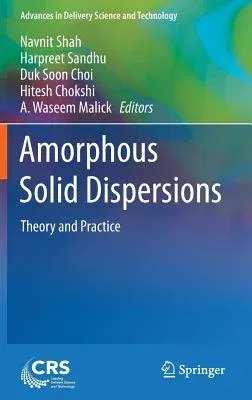Amorphous Solid Dispersions: Theory and Practice (2014)Hardcover - 2014, 21 November 2014

Qty
1
Turbo
Ships in 2 - 3 days
In Stock
Free Delivery
Cash on Delivery
15 Days
Free Returns
Secure Checkout

Part of Series
Advances in Delivery Science and Technology
Print Length
699 pages
Language
English
Publisher
Springer
Date Published
21 Nov 2014
ISBN-10
1493915975
ISBN-13
9781493915972
Description
Product Details
Book Edition:
2014
Book Format:
Hardcover
Country of Origin:
NL
Date Published:
21 November 2014
Dimensions:
23.39 x
15.6 x
3.81 cm
Genre:
Science/Technology Aspects
ISBN-10:
1493915975
ISBN-13:
9781493915972
Language:
English
Location:
New York, NY
Pages:
699
Publisher:
Weight:
1179.34 gm